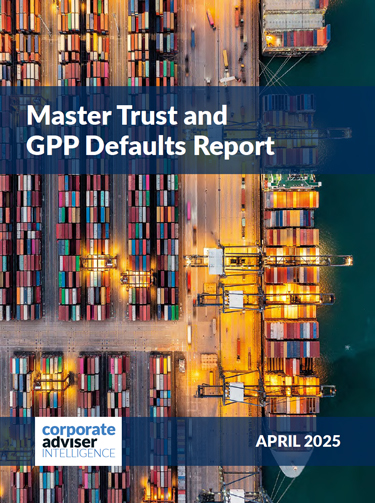Against a backdrop of increased costs, sky-rocketing medical insurance premiums are the last thing employers want. But while a price hike is rarely welcome, a long-term approach to employee health is essential.
The last couple of years have been particularly challenging. “The highest premium increase I’ve seen is 100 per cent plus,” says Ed Watling, head of health and wellbeing at Mattioli Woods. “One insurer had an average increase of 27 per cent this year and I’ve seen plenty of schemes with premium increases of 60 per cent or 70 per cent. It’s not every client: the worst are those with high claims, especially in the SME sector.”
Even those schemes that have seen below average levels of claims have been hit with annual increases of 15 per cent to 20 per cent. “If you see an increase of 20 per cent, there’s usually room for negotiation as it means claims levels are low,” adds Watling.
Premium pressures
A combination of factors lie behind these increases. Alongside high general inflation, which peaked
just north of 11 per cent in 2022, the cost of medical treatment has also risen, as demand outstripped supply.
Concerns about the NHS have also driven changes in behaviour. Mark Southern, sales and marketing director at WPA, has seen a significant increase in claims frequency and volume. “People are worried about having to wait for treatment,” he says. “Where they would have gone through the NHS, they’re now using the medical insurance.”
Statistics help to fuel these fears. As an example, figures obtained by the Liberal Democrats found that 85,400 elective operations in NHS hospitals in England were cancelled at the last minute in 2024/5. Of these, 23 per cent took longer than the 28-day standard to rearrange – a significant increase from just 7 per cent of cancelled operations a decade ago.
Utilisation is being driven in other ways too. “Referral is easier now,” says Southern. “Five years ago we didn’t have virtual GPs. It’s not always easy to make a diagnosis on a video call so there is a risk of over-referral.”
The pandemic has also left its mark. Claims for mental health have spiked since Covid, as employees became more comfortable talking about it. Similarly, homeworking and the arrival of virtual physiotherapy have made employees log in for a video session with a physiotherapist when they get the first twinge of a musculoskeletal issue.
Delays in accessing screenings and treatments have also led to later cancer diagnoses. “Where a cancer is more advanced, it can mean more complex treatment and more expensive claims,” says Amanda Cran, healthcare proposition leader at Gallagher. “Coupled with all the other factors such as the issues with the NHS and greater accessibility through the digital services, it’s a perfect storm for premium increases.”
Cost examination
Employers who have seen their medical insurance premiums double over the last few years will probably be asking whether they should keep the cover, especially those who introduced it following the pandemic.
“It’s a very difficult benefit to take away once it’s in place,” says Watling. “Employees value it and there’s no way to know whether someone, or their spouse or kids, is halfway through a claim.”
Faced with a chunkier premium, Southern says it’s also important to remember the reasons why a medical insurance scheme was introduced in the first place. “It might have been to compete for talent or to address workforce health issues,” he says. “Factoring in these reasons will often highlight the value the scheme brings the business. We have very high retention rates across our schemes.”
There are also a variety of cost containment mechanisms for those struggling with rising premiums. Adding or increasing an excess is one option. These help to reduce claims costs but, depending on the size, can also act as a deterrent. Watling says that a £100 excess can bring the premium down by between 7 per cent and 10 per cent, while shifting it up to £200 will shave a further three to four percentage points off the premium. “Around 75 per cent of our clients have a £100 excess but we are seeing more looking to take it up to £200,” he adds.
Pathways and guided care can also help to control costs. By channelling treatment through a selected group of consultants or hospitals, an employer can potentially save as much as 20 per cent on premiums. And, as consultants are selected on factors such as quality and value, employees won’t see any difference in the healthcare they receive.
Achieving long-term objectives
Using any of these product features can help to take the pressure off until the next renewal but Cran says employers need to take a longer-term approach to their healthcare benefits. “These are short-term cost containment measures but employers need to consider how they can make premiums stable and sustainable for the long-term. This requires more focus on employee wellbeing.”
Key to getting this right is the workplace culture. “Getting employees to change lifestyle factors will always be difficult but if an employer has a supportive culture, it’s easier to get the necessary engagement,” she
adds. “Using emotion rather than technical information in wellbeing communications is much more engaging.”
Perversely, it may also mean promoting the medical insurance benefits that can potentially drive up premiums. Directing employees to the virtual physiotherapy service may feel like an instant hit on next year’s renewal premium but if it prevents a more costly operation and time off to recover, it’s a saving for the business.
Southern agrees. “Employers need to focus more on prevention and nudge employees to be healthier, whether that’s through fresh fruit, nutritious food in the canteen or lunchtime walking groups.” he says. “Helping staff early is essential. Spending £50 on a new office chair is a much better investment than waiting for them to need an operation on their back that costs thousands.”
Adopting this more proactive approach does take courage and a shift in focus from the renewal notification to the wider benefits of the medical insurance scheme. But, by focusing on the objectives behind the scheme’s introduction, advisers can help employers understand its true value.
Product options
Looking after employee health and wellbeing is a key objective for every employer. While medical insurance may be the most comprehensive option, there are other ways for employers to show staff they care about employees’ health, without busting the budget.
Digital health products such as WPA’s Digital Health, Simplyhealth’s Simply Essentials and Lime Health’s Health Essentials provide support through digital services including virtual GP, physiotherapy and counselling. “It’s where employers should focus,” says Amanda Cran, healthcare proposition leader at Gallagher. “Musculoskeletal and mental health are two areas where NHS waiting lists are particularly long and these services give employees fast access to advice and signposting to further support.”
Lower cost medical insurance is also available, such as Benenden’s business healthcare. This is priced at £15.50 per employee a month and includes treatment for some of the more straightforward procedures where the NHS wait is more than five weeks.
Cash-strapped employers could also roll out a voluntary medical insurance scheme, says Ed Watling, head of health and wellbeing at Mattioli Woods. “An employer needs around 500 employees to do this and we expect to see more of this over the next year,” he adds.
Both Cran and Watling have also seen more interest in the health and wellbeing benefits included on group risk products. “Employees put so much focus on medical insurance but there are some great value add-ons on group risk,” says Cran. “Where these are communicated well, an employer can get really good engagement.”





